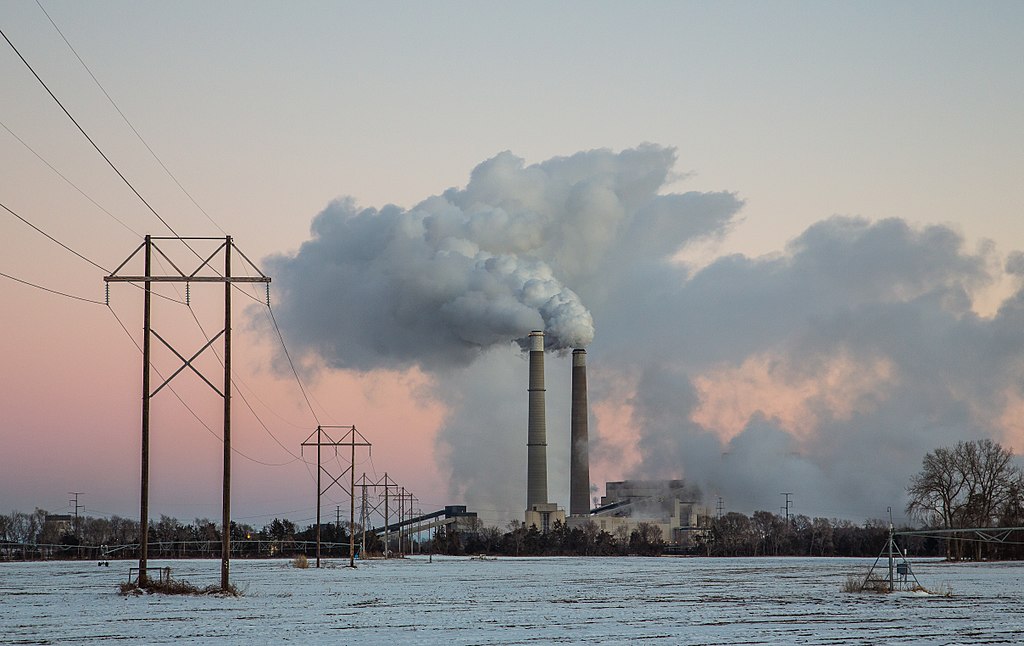The Southern Alliance for Clean Energy (SACE) asked the Federal Energy Regulatory Commission not to rely on a Tennessee Valley Authority analysis that selected a new gas-fired generator to replace an existing coal-fired generator, in comments to the commission.
The group says the commission (FERC) should evaluate replacing the coal unit with solar, wind, energy efficiency and storage, rather than gas generation.
SACE made its comments as FERC evaluates a proposal from a pipeline company to build a new gas pipeline that would serve TVA’s proposed gas unit. Part of FERC’s review of any proposal for a new gas pipeline is “to verify there is a need for that pipeline,” said Maggie Shober, research director at SACE, in a post.
The group says that the Tennessee Gas Pipeline Company proposes to construct a gas pipeline “based on the claim” by TVA that it needs a new gas unit to replace the coal unit that it plans to retire. TVA came to that conclusion in a 449-page draft environmental impact statement.
SACE argues that for “a multitude of reasons,” TVA’s draft environmental impact statement “should not be relied on to assume TVA has a need for a new gas [unit], and thus there is not a need” for the proposed pipeline.
According to SACE, TVA’s analysis “failed to accurately evaluate all options” to replace the coal unit and “skewed its analysis toward its desired outcome.” While TVA said that its “financial and system analysis” indicated that a gas unit was the “best overall solution,” SACE said that “the methods, assumptions, and results of those financial and system analyses are absent” from TVA’s statement.
Through formal inquiries known as NEPA and FOIA requests, SACE learned that TVA used in its analysis assumptions that it developed in 2017 for its 2019 integrated resource plan, including “the lowest price forecast” from 2017 for gas, “despite gas prices being currently high and volatile and forward markets indicating they will likely remain high or at least volatile.”
SACE said that TVA’s response to its FOIA request “again did not provide details on the assumptions used to analyze the costs of the alternatives” for replacing the coal unit.
TVA analyzed a large-scale solar and storage alternative, SACE said, and apparently identified, as one major cost, the cost to upgrade the transmission system to connect solar and storage. “A combination of distributed and large-scale” solar resources “could easily mitigate the transmission costs,” SACE said, and FERC should encourage TVA through FERC’s Regional Transmission Planning rulemaking to “proactively plan and build out its transmission system” to integrate renewables.
TVA did not include wind power or energy efficiency in its analysis, SACE said.
SACE also argued that TVA leadership has a conflict of interest, in that adding a new combined-cycle gas unit would help TVA’s CEO earn a bonus as it would “shore up” the “combined cycle availability factor performance metric,” which is the basis for 10% of the CEO’s annual bonus potential of $3 million. Replacing the coal unit with solar and storage “does not have the same potential,” as there are no bonus metrics based on renewable or clean energy targets, SACE said.
FERC has new information to improve the analysis of alternatives to TVA’s retiring coal unit, SACE said, such as using assumptions that are more up to date. The new Inflation Reduction Act has the potential “to change assumptions on both the demand and supply side,” SACE said, including through expanded tax credits for clean energy sources, and a new fee on methane emissions.
With updated assumptions, “it is unlikely” that TVA’s proposed gas unit will be needed, and thus the pipeline company’s proposed gas unit “would not be needed either,” SACE said.
The U.S. Environmental Protection Agency, SACE reported, similarly recommended that TVA “transparently disclose its modeling methodologies and assumptions to better enable a comparison between the alternatives,” and filed those comments with FERC.
This content is protected by copyright and may not be reused. If you want to cooperate with us and would like to reuse some of our content, please contact: editors@pv-magazine.com.








“The group (SACE) says the commission (FERC) should evaluate replacing the coal unit with solar, wind, energy efficiency and storage, rather than gas generation.”
Okay, so where would you have TVA build solar power arrays in any of the states in which it operates? Do you any idea what would be required to replace a base load large central power station? I don’t think you do so I’ll tell you.
It would take about 130,000 acres of land area and at least five Raccoon Mountain pumped storage plants to replace 2000 MWe of baseload nuclear, gas-fired or coal-fired power stations with solar panel arrays at a cost of tens of billions of dollars. (See https://poststar.com/opinion/letters/letter-to-the-editor-large-solar-power-farms-not-a-great-idea/article_1379832a-dcb4-5d73-9b79-a6b6bf61fd53.html and https://leaderherald.com/opinion/letters-to-the-editor/2019/09/solar-energy-is-a-losing-proposition-for-the-ratepayers/.
Now that we know how much land area would be required where would you put several hundred thousand acres of solar panels? Where would you find five more Raccoon Mountain pumped storage sites in TVA’s service area?
Where would you put several thousand windmills? Are you aware that the only suitable area in Tennessee for windmills is in Eastern Tennessee? And don’t think for a moment that TVA is going to start lining the ridges with windmills because the public uproar would be deafening. You do realize that TVA imports most of its wind power from out-of-state wind power generators, don’t you?
It would be a good idea for you folks in the clean energy community to watch this video by the legendary George Carlin: https://www.youtube.com/watch?v=EjmtSkl53h4.
I accidentally omitted the word “have” in the third sentence of the first paragraph. My apologies.